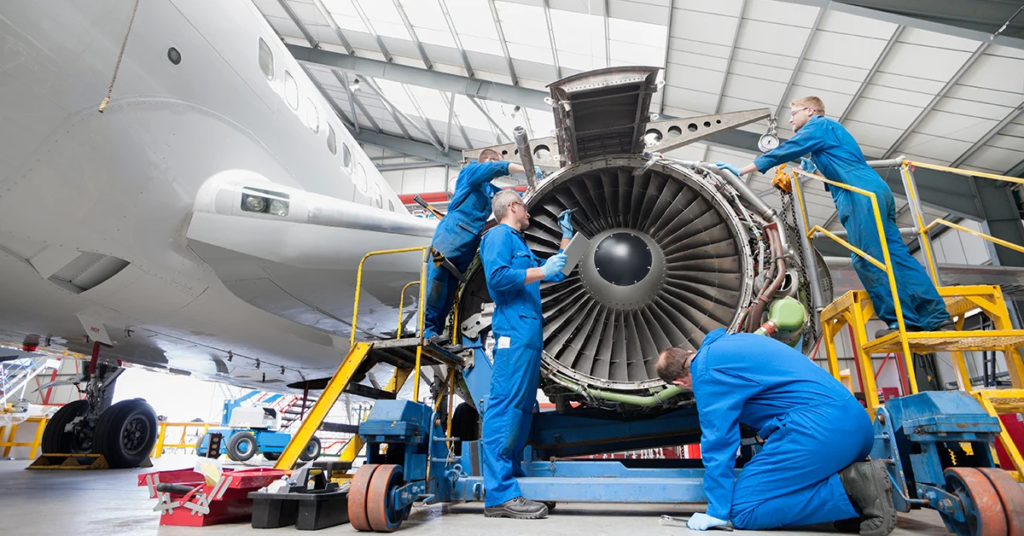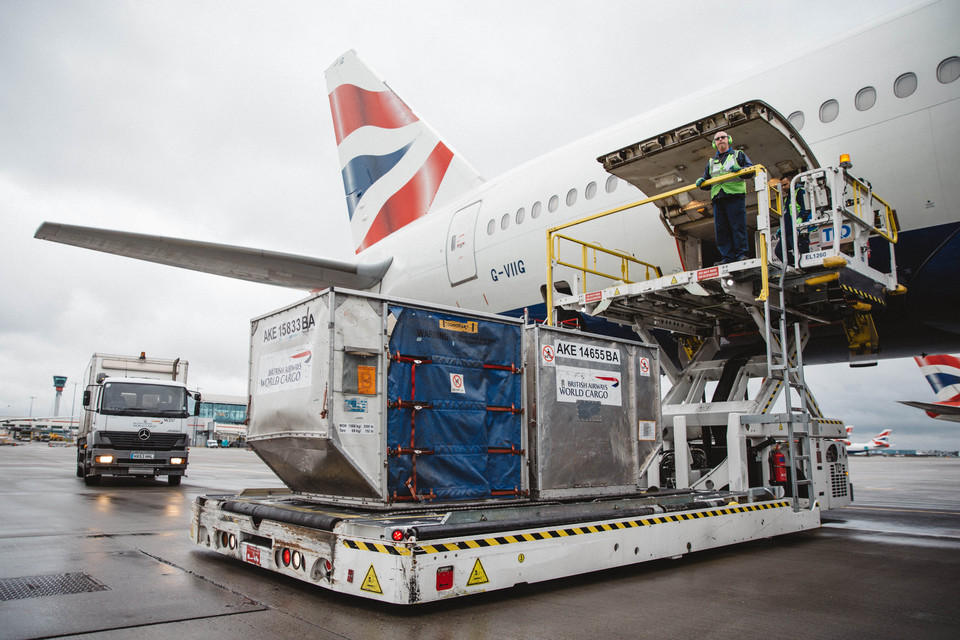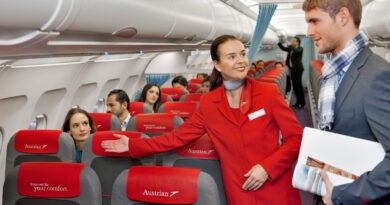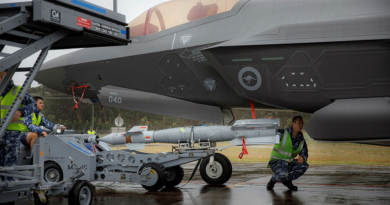Free Airline Technical Publications Executive course (4months)
Airline Technical Publications Executive is responsible for the technical documentation control and distribution with an Airline Maintenance department.
Brief Job Description: Airline Technical Publications Executive is responsible for technical writing, maintaining the current status and distribution of all documents assigned to company library (manuals, forms, job cards, etc.)
Personal Attributes: Airline Technical Publications Executive attributes would include good communication skills, excellent written communication skills and good interpersonal skills.


Safety and security procedures:
Comprehending the safety and security procedures:
PC1. comply with the organisation’s safety and security policies and procedures
PC2. comply with the regulatory guidelines on safe conduct of operations and maintenance of conditions to thwart any acts of unlawful interference
PC3. report any identified breaches of safety, and security policies and procedures to the designated person
PC4. coordinate with other resources at the workplace (within and outside the organisation) to achieve safe and secure environment
PC5. identify and mitigate any safety and security hazards like illness, accidents, fires or acts of unlawful interference if it falls within the limits of individual’s authority
PC6. report any hazards outside the individual’s authority to the relevant person in line with organisational procedures and regulatory guidelines
PC7. follow organisation’s emergency procedures for accidents, fires or acts of unlawful interference
PC8. identify and recommend opportunities for improving health, safety and security to the designated person
PC9. ensure all health and safety records are updated and procedures well defined
Knowledge and Understanding
Organisational Context
KA1. hazard identification and risk management as defined within the organisational policy and procedures

KA2. regulatory requirements and organisation’s procedures for maintenance of safety and security standards and individual’s role and responsibilities in relation to this
KA3. how and when to report hazards
KA4. the limits of responsibility for dealing with hazards
KA5. the organisation’s emergency procedures for different emergency situations and the importance of following these
KA6. importance of maintaining high standards of safety and security KA7. implications that any non-compliance with safety and security may
have on individuals and the organisation
Technical Knowledge
KB1. different types of breaches of safety and security and how and when to report these
KB2. evacuation procedures for workers and passengers
KB3. how to summon medical assistance and the emergency services, where necessary
KB4. how to use the health, safety and accident reporting procedures and the importance of these
KB5. regulatory guidelines on dealing with safety and security emergencies
Core Skills/ Generic Skills

| Writing Skills |
| The user/ individual on the job needs to know and understand how to: SA1. accurately complete a well written report in English language detailing the situations of emergency with attention to detail |
| Reading Skills |
| The user/individual on the job needs to know and understand how to: SA2. read instructions/guidelines/procedures/rules |
| Oral Communication (Listening and Speaking skills) |
| The user/individual on the job needs to know and understand how to: SA3. listen to and orally communicate information with all concerned |
Professional Skills

| Decision Making |
| The user/individual on the job needs to know and understand how to: SB1. make decisions on a suitable course of action or response if permitted by the authority matrix |
| Plan and Organize |
| The user/individual on the job needs to know and understand how to: SB2. monitor efficient functioning of all activities SB3. plan and organise work to achieve targets and deadlines |
| Customer Centricity |
| The user/individual on the job needs to know and understand how to: SB4. communicate with passengers and other stakeholders in a courteous manner SB5. maintain cordial working relationship |
| Problem Solving |
| The user/individual on the job needs to know and understand how to: SB6. identify trends/common causes for errors and suggest possible solutions to the supervisor/management SB7. identify and correct errors |
| Analytical Thinking |
| The user/individual on the job needs to know and understand how to: SB8. analyse best possible solutions (cost, time, effort, etc) suited for operations |
| Critical Thinking |
| The user/individual on the job needs to know and understand how to: SB9. concentrate on task at hand and complete it without errors SB10. apply balanced judgments to different situations |

Maintain library and documents:
Maintain records and documents
PC1. maintain a well-organized and up to date technical library PC2. maintain revision controls, inventory, computer database and
master file for all documents issued and distributed
PC3. maintain engineering authorizations (EA), Airworthiness directives (AD) and Service bulletins (SB) with associated documents (drawings, alternate part numbers) in the library and reproduce as and when required
PC4. maintain current records and inventory control of all manuals assigned to an aircraft, line stations, outside agencies and company personnel
PC5. gather and interpret all technical documents and publications from outside sources (FAA, DGCA, EASA, manufacturers, PMA/STC holders, vendors etc.) and maintain current revision service of these documents
PC6. maintain quantities of current documents at or above established minimum levels to include forms, job cards, spare manuals etc.
Reproduce and distribute documents:
PC7. ensure timely distribution, tracking and follow up of technical documents and manual revisions to the affected departments and/or personnel within the company
PC8. distribute the updated version of engineering authorizations (EA), Airworthiness directives (AD) and Service bulletins (SB) with associated documents (drawings, alternate part numbers) to the respective departments
PC9. undertake revision production and distribution of the company’s technical manuals, forms and job cards in accordance with company approved procedures.
PC10. perform all other duties as assigned
Knowledge and Understanding
Organisational Context
KA1. organisation policies on revision control and document distribution KA2. organisation policies on authorization matrix to be followed for any
technical document revision
KA3. distribution process as defined by the organisation KA4. escalation process
Technical Knowledge
KB1. procedures for dealing with documentary discrepancies
KB2. procedure for reading and identifying technical publications from various vendors
KB3. quality procedures
Core Skills/ Generic Skills
| Writing Skills |
| The user/ individual on the job needs to know and understand how to: SA1. fill any forms related to documentation SA2. prepare required reports for management as required |
| Reading Skills |
| The user/individual on the job needs to know and understand how to: SA3. interpret technical documents and revisions received from sources |
| Oral Communication (Listening and Speaking skills) |
| The user/individual on the job needs to know and understand how to: SA4. communicate clearly with supervisors and peers SA5. regularly communicate with all peers in the chain of activities to ensure activities are running smoothly |
Professional Skills
| Decision Making |
| The user/individual on the job needs to know and understand how to: SB1. check compliance for escalation |
| Plan and Organize |
| The user/individual on the job needs to know and understand how to: SB2. monitor efficient functioning of all activities SB3. prioritise and execute tasks in within the scheduled time limits |
| Customer Centricity |
| The user/individual on the job needs to know and understand how to: SB4. communicate with internal customers in a courteous manner SB5. maintain effective customer/ vendor relationship |
| Problem Solving |
| The user/individual on the job needs to know and understand how to: SB6. identify trends/common causes for errors and suggest possible solutions to the supervisor / management SB7. identify and correct errors |
| Analytical Thinking |
| The user/individual on the job needs to know and understand how to: SB8. identify and solve issues |
| Critical Thinking |
| The user/individual on the job needs to know and understand how to: SB9. concentrate on task at hand and complete it without errors |

Work Effectively in a Team
Performance Criteria
Support the work team
PC1. display courteous and helpful behaviour at all times.
PC2. take opportunities to enhance the level of assistance offered to colleagues.
PC3. meet all reasonable requests for assistance within acceptable workplace timeframes.
PC4. complete allocated tasks as required. PC5. seek assistance when difficulties arise.
PC6. use questioning techniques to clarify instructions or responsibilities.
PC7. identify and display a non discriminatory attitude in all contacts with customers and other staff members.
Maintain personal presentation
PC8. observe appropriate dress code and presentation as required by the workplace, job role and level of customer contact.
PC9. follow personal hygiene procedures according to organisational policy and relevant legislation.
Develop effective work habits
PC10. interpret, confirm and act on workplace information, instructions and procedures relevant to the particular task.
PC11. interpret, confirm and act on legal requirements in regard to anti- discrimination, sexual harassment and bullying.
PC12. ask questions to seek and clarify workplace information.
PC13. plan and organise daily work routine within the scope of the job role.
PC14. prioritise and complete tasks according to required timeframes.
PC15. identify work and personal priorities and achieve a balance between competing priorities.
Knowledge and Understanding
Organisational Context
KA1. The policies and procedures relating to the job role.
KA2. The value system of the organisation.
KA3. Employee rights and obligations.
KA4. The reporting hierarchy and escalation matrix.
Technical Knowledge
KB1. ask questions to identify and confirm requirements.
KB2. follow routine instructions through clear and direct communication. KB3. use language and concepts appropriate to cultural differences.
KB4. use and interpret non-verbal communication.
KB5. the scope of information or materials required within the parameters of the job role.
KB6. consequences of poor team participation on job outcomes. KB7. work health and safety requirements.
Core Skills/ Generic Skills
| Writing Skills |
| On the job the individual needs to be able to: SA1. complete documentation accurately. SA2. write simple reports when required. |
| Reading Skills |
| On the job the individual needs to be able to: SA3. read information accurately. SA4. read and interpret data sheets. |
| Oral Communication (Listening and Speaking skills) |
| The user/individual on the job needs to know and understand how to: SA5. listen to and orally communicate information with all concerned |
Professional Skills
| Decision Making |
| On the job the individual needs to be able to: SB1. make appropriate decisions regarding the responsibilities of the job role. |
| Plan and Organise |
| The user/individual on the job needs to know and understand how to: SB2. monitor efficient functioning of all activities SB3. plan and organise work to achieve targets and deadlines |
| Customer Centricity |
| The user/individual on the job needs to know and understand how to: SB4. communicate with passengers and other stakeholders in a courteous manner SB5. maintain effective work relationship |
| Problem Solving |
| The user/individual on the job needs to know and understand how to: SB6. identify trends/common causes for errors and suggest possible solutions to the supervisor / management SB7. identify and correct errors |
| Analytical Thinking |
| The user/individual on the job needs to know and understand how to: SB8. analyse best possible solutions (cost, time, effort, etc.) suited for operations |
| Critical Thinking |
| The user/individual on the job needs to know and understand how to: SB9. concentrate on task at hand and complete it without errors SB10. apply balanced judgments to different situations |

Model Curriculum
Airline Technical Publications Executive
Follow safety and security procedures
understand the organisation’s safety and security policies and procedures
understand the regulatory guidelines on safe conduct of operations and maintenance of conditions to thwart any acts of unlawful interference
report any identified breaches of safety, and security policies and procedures to the designated person
coordinate with other resources at the workplace (within and outside the organisation) to achieve safe and secure environment
identify and mitigate any safety and security hazards like illness, accidents, fires or acts of unlawful interference if it falls within the limits of individual’s authority
report any hazards outside the individual’s authority to the relevant person in line with organisational procedures and regulatory guidelines
follow organisation’s emergency procedures for accidents, fires or acts of unlawful interference
identify and recommend opportunities for improving health, safety, and security to the designated person
complete all health and safety records are updates and procedures well defined
Maintain library and documents:
maintain a well-organized and up to date technical library PC2
maintain revision controls, inventory, computer database and master file for all documents issued and distributed
maintain engineering authorizations (EA), Airworthiness directives (AD) and Service bulletins (SB) with associated documents (drawings, alternate part numbers) in the library and reproduce as and when required
maintain current records and inventory control of all manuals assigned to an aircraft, line stations, outside agencies and company
personnel
receive all technical documents and publications from outside sources (FAA, DGCA, EASA, manufacturers, PMA/STC holders, vendors etc.) and maintain current revision service of these documents
maintain quantities of current documents at or above established minimum levels to include forms, job cards, spare manuals etc.
ensure timely distribution, tracking and follow up of technical documents and manual revisions to the affected departments and/or personnel within the company
distribute the updated version of engineering authorizations (EA), Airworthiness directives (AD) and Service bulletins (SB) with associated documents (drawings, alternate part numbers) to the respective departments
accomplish revision production and distribution of the company’s technical manuals, forms and job cards in accordance with company approved procedures
execute all other duties as assigned
Work Effectively in a Team:
display courteous and helpful behaviour at all times.
take opportunities to enhance the level of assistance offered to colleagues.
meet all reasonable requests for assistance within acceptable workplace timeframes.
complete allocated tasks as required.
seek assistance when difficulties arise.
use questioning techniques to clarify instructions or responsibilities.
identify and display a non-discriminatory attitude in all contacts with customers and other staff members.
observe appropriate dress code and presentation as required by the workplace, job role and level of customer contact.
follow personal hygiene procedures according to organisational policy and relevant legislation.
interpret, confirm and act on workplace information, instructions and procedures relevant to the
particular task
interpret, confirm and act on legal requirements in regard to antidiscrimination, sexual harassment and bullying.
ask questions to seek and clarify workplace information.
plan and organise daily work routine within the scope of the job role
prioritise and complete tasks according to required timeframes
identify work and personal priorities and achieve a balance between competing priorities
Unique equipment used;
relevant extracts of trip file / charts/documents, charts & documents
charts/documents regarding control system software in use
library information & management system software
inventory control system software
relevant aircraft handling manual (AHM)
relevant aircraft maintenance manuals, flight manuals
Guidelines for Assessment:
1. Criteria for assessment for each Qualification Pack will be created by the Sector Skill Council. Each Performance Criteria (PC) will be assigned marks proportional to its importance in NOS. SSC will also lay down proportion of marks for Theory and Skills Practical for each PC
2. The assessment for the theory part will be based on knowledge bank of questions created by the SSC
3. Individual assessment agencies will create unique question papers for theory part for each candidate at each examination/training centre (as per assessment criteria below)
4. Individual assessment agencies will create unique evaluations for skill practical for every student at each examination/training centre based on this criteria
5. To pass the Qualification Pack, every trainee should score a minimum of 70% in aggregate
6. The marks are allocated PC wise, however, every NOS will carry a weightage in the total marks allocated to the specific QP








